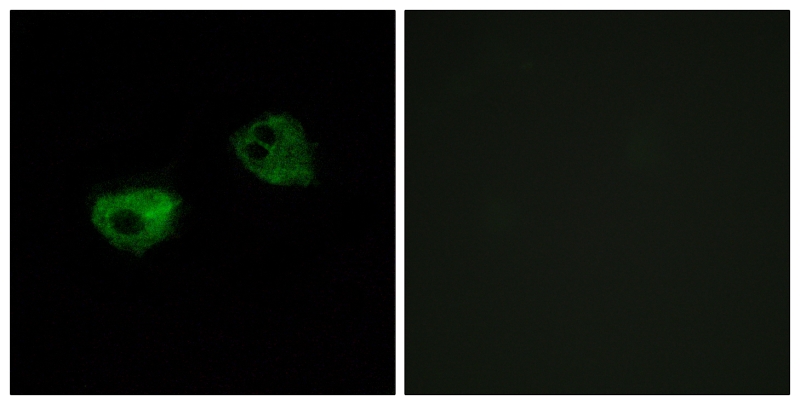
| WB | 咨询技术 | Human,Mouse,Rat |
| IF | 咨询技术 | Human,Mouse,Rat |
| IHC | 咨询技术 | Human,Mouse,Rat |
| ICC | 1/50-1/200 | Human,Mouse,Rat |
| FCM | 咨询技术 | Human,Mouse,Rat |
| Elisa | 1/10000 | Human,Mouse,Rat |
| Aliases | MTNR1A; Melatonin receptor type 1A; Mel-1A-R; Mel1a receptor |
| Entrez GeneID | 4543 |
| Host/Isotype | Rabbit IgG |
| Antibody Type | Primary antibody |
| Storage | Store at 4°C short term. Aliquot and store at -20°C long term. Avoid freeze/thaw cycles. |
| Species Reactivity | Human,Mouse,Rat |
| Immunogen | synthesized peptide of human MTR1A. AA range:191-240 |
| Formulation | Purified antibody in PBS with 0.05% sodium azide,0.5%BSA and 50% glycerol. |
+ +
1. **"Melatonin receptors: molecular pharmacology and signalling in the context of system bias"**
- *Jockers R, et al.*
- 综述MT1和MT2受体的分子信号机制,讨论受体抗体在定位及功能研究中的应用,如Western blot和免疫荧光验证受体亚型表达差异。
2. **"Differential expression of melatonin receptors in human glioblastoma and brain tissue"**
- *Wion-Barbot N, et al.*
- 使用MT1抗体通过免疫组化分析胶质母细胞瘤中MT1受体分布,发现其表达水平与肿瘤恶性程度相关。
3. **"Role of melatonin MT1 receptor in the regulation of glucose homeostasis"**
- *Brydon L, et al.*
- 应用MT1抗体研究小鼠胰岛β细胞中受体的表达,揭示其通过cAMP信号通路调节胰岛素分泌的机制。
4. **"Validation of melatonin receptor antibodies utilizing murine melatonin receptor knockout models"**
- *Gerdin MJ, et al.*
- 利用基因敲除小鼠模型验证MT1抗体的特异性,确认其在脑组织和视网膜中检测受体的可靠性。
Melatonin Receptor 1A (MT1), encoded by the *MTNR1A* gene, is a G protein-coupled receptor that binds melatonin, a hormone regulating circadian rhythms and physiological processes like sleep, mood, and immune function. MT1. along with MT2. mediates melatonin's effects by activating signaling pathways such as inhibition of cAMP production and modulation of ion channels. Its expression is highest in the suprachiasmatic nucleus of the brain but also found in peripheral tissues, including the retina, kidneys, and immune cells.
Antibodies targeting MT1 are essential tools for studying its expression, localization, and function. They enable detection via techniques like immunohistochemistry, Western blotting, and flow cytometry, aiding research into circadian disorders, sleep disturbances, and diseases like depression or cancer. MT1 antibodies also help evaluate receptor dynamics under varying conditions, such as light exposure or pharmacological interventions, and assess therapeutic agents targeting melatonin pathways.
Challenges in developing MT1 antibodies include its hydrophobic transmembrane structure and potential cross-reactivity with MT2 due to sequence homology. Many commercially available antibodies are raised against extracellular or intracellular epitopes, validated for specificity using knockout models or blocking peptides. Recent advances in recombinant antibody technology have improved consistency and reduced batch variability. These tools remain critical for unraveling MT1's role in health and disease, as well as for drug discovery aimed at modulating melatonin-related pathways.
×